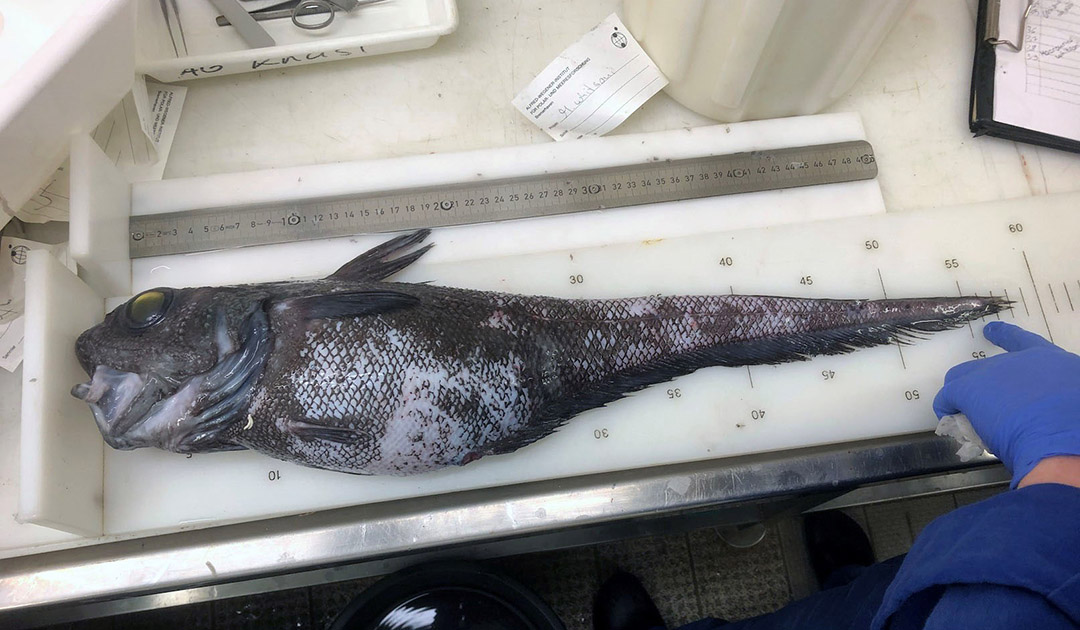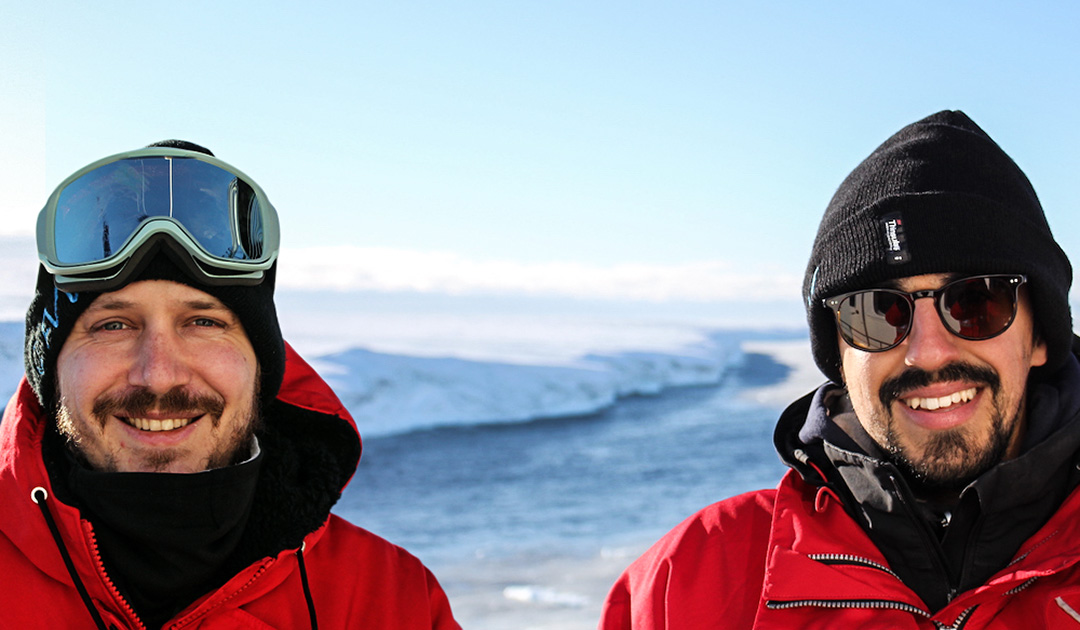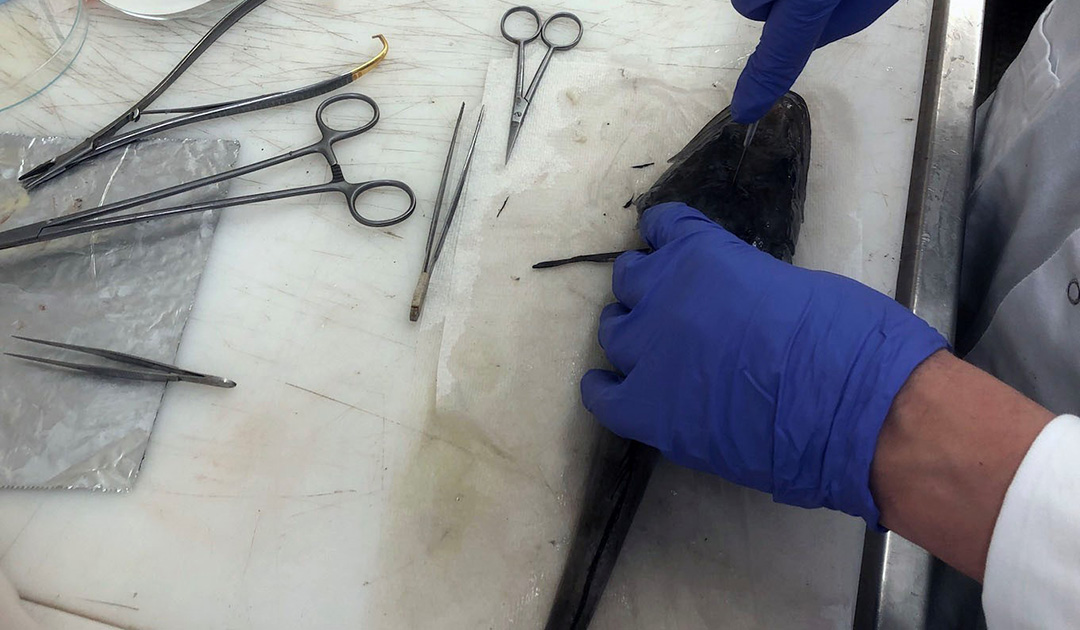
Two young scientists from the University of Basel are currently on board the German research icebreaker “Polarstern” in the Weddell Sea in Antarctica, examining the digestive tract of Antarctic fish and invertebrates carefully, among other things. They are looking for something that you basically can not wish to find: Microplastic.
On board the current “Polarstern” expedition, Dr. Gabriel Erni Cassola, ecologist and expert on microplastics at the University of Basel, and master’s student Kevin Leuenberger are investigating various aspects of microplastics in the Southern Ocean. While Leuenberger focuses primarily on whether pelagic (living in the water column) and benthic (living on the seafloor) animals take up microplastics, Dr. Cassola is also looking at the colonization of microplastic particles by microorganisms. Both researchers work in the University of Basel’s Man-Society-Environment (MGU) program, which uses an inter- and transdisciplinary approach to focus on various aspects of sustainable resource management.

Since the start of the expedition on March 3 in Cape Town, South Africa, the two microplastics researchers have been sharing insights into their work on board in a blog available on the multilingual Swiss information platform swissinfo.ch. The two are particularly interested in research on microplastics in the Southern Ocean because Antarctica and its adjacent seas are considered relatively cut off from the rest of the world due to the Antarctic Circumpolar Current.
Catch and dissect fish
One of their goals during the expedition is to learn more about the occurrence of microplastics in near-surface water layers of the Southern Ocean. To estimate how much Antarctic marine animals are contaminated with microplastics, they collect stomach and intestine samples from fish and invertebrates from different ocean depths.

The route so far has taken them from Cape Town along the prime meridian southward to Neumayer Station III of the Alfred Wegener Institute, before the “Polarstern” turned westward and has since been zigzagging through the ice-covered Weddell Sea. At predetermined sampling stations, the EWOS I (Eastern Weddell Sea Observation System I) team, which includes Drs. Cassola and Leuenberger, deploys the various fishing gear they use to catch fish and other animals from the seafloor at depths of up to 1000 meters and from the water column.
Sampling is sometimes difficult as winter approaches, with sea ice already forming in the study area and hindering the deployment and retrieval of longlines. Nevertheless, the team has been very successful so far and has been able to catch various fish, especially bottom-dwelling species such as eelpout, Grenadier cod (Triperophycis gilchristi) and various representatives of the suborder Notothenioidei (Antarctic fish).
Dr. Cassola and Leuenberger dissect the captured animals to remove the digestive tract. Other research groups use the same animals to study blood as well as tissue samples from the liver, muscles, fins, eyes, reproductive organs and otholiths, small bones in the fish’s head.
However, the question of whether the animals have ingested microplastics will not be answered so quickly – the samples will first be stored and analyzed later in the laboratory in Basel.

(Micro-)plastic is everywhere
In every place scientists have searched for plastic and microplastics, they have found them – from the highest mountains to the polar regions to the deepest deep-sea trenches. Just at the beginning of April, an overview study led by the Alfred Wegener Institute was published, making clear that plastic has arrived in all Arctic habitats. Especially the small microplastics, particles smaller than five millimeters, have penetrated every corner of our planet – even to the Antarctic seabed. This is likely to be equally true for the even tinier, not yet as well studied nanoplastics recently detected in the Austrian Alps.
In science, microplastics are divided into primary microplastics, which enter the environment as tiny particles, and secondary microplastics, which are formed by the breakdown of larger plastic particles in the environment. Regardless of their origin, particles can be transported long distances by wind through the atmosphere and/or rivers to the oceans, where they are carried by currents. These are by no means only fragments of carelessly discarded waste (e.g. cigarette butts), but also to a large extent textile fibers and abrasion from tires and brakes. A recent study estimates that there are 24.4 trillion microplastic particles in the upper layers of the oceans.

All of these particles are potentially dangerous to animals if they ingest them: depending on the size of the animal, the particles can block the digestive tract and also release surface-bound contaminants inside the body that can then be absorbed by the tissues and cause disease or hormone disruption. For small, filter-feeding zooplankton organisms, microplastic particles were immediately lethal in the experiment. It remains to be seen to what extent Antarctic fish are already affected.
All plastic particles remain in the environment for a very long time, are constantly transported from one place to another, and accumulate in the food chain together with the adhering pollutants, thus also threatening large predators such as polar bears and orcas. The effects for us humans are still unknown, but the fact that microplastics have been detected in both blood and lungs does not bode well.

There is no end in sight to the plastic flood. In 2020, 367 million tons of plastic were produced, according to Plastics Europe, and manufacturers plan to further increase production. The amount of plastic in the environment will also increase accordingly. The United Nations Environment Programme (UNEP) expects ocean plastic pollution to double by 2030. Currently, it is believed that between eight and ten million tons of plastic end up in the oceans each year, or the load of two garbage trucks per minute.
Last but not least, plastic fuels climate change because of the immense emissions throughout its life cycle.
Nevertheless, there is also reason for hope: In early March, during the United Nations Environment Assembly in Nairobi, Kenya, nearly 200 countries agreed to draft a treaty to put an end to plastic pollution. It is hoped that an agreement can be reached by the end of 2024.
The two researchers Dr. Gabriel Erni Cassola and Kevin Leuenberger will stay on the “Polarstern” for the next expedition and take more samples – let’s hope they don’t find anything!
The research of Dr. Gabriel Erni Cassola and Kevin Leuenberger is embedded in the overarching project “Microplastics in the Southern Ocean”, which is a collaborative project of several research institutes. In addition to the University of Basel, the Alfred Wegener Institute, the Royal Netherlands Institute for Marine Research NIOZ and the University of Utrecht are involved.
Julia Hager, PolarJournal
Link to the blog: SWI swissinfo.ch Polar Blog (in English)
More about this topic





